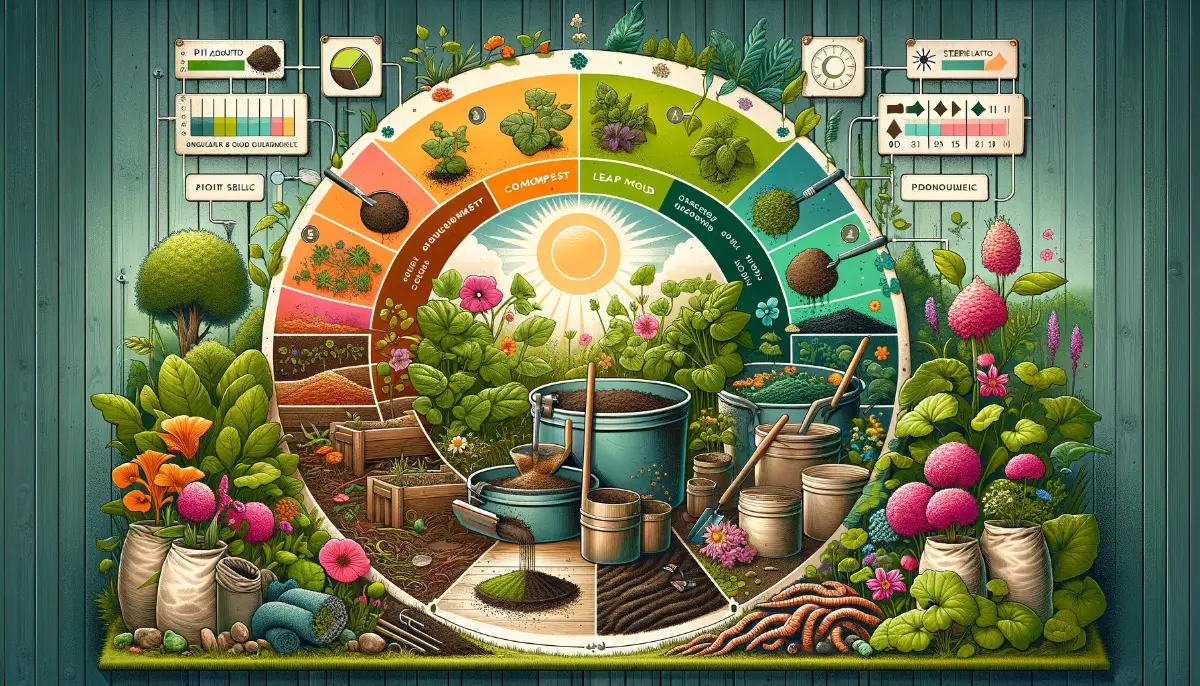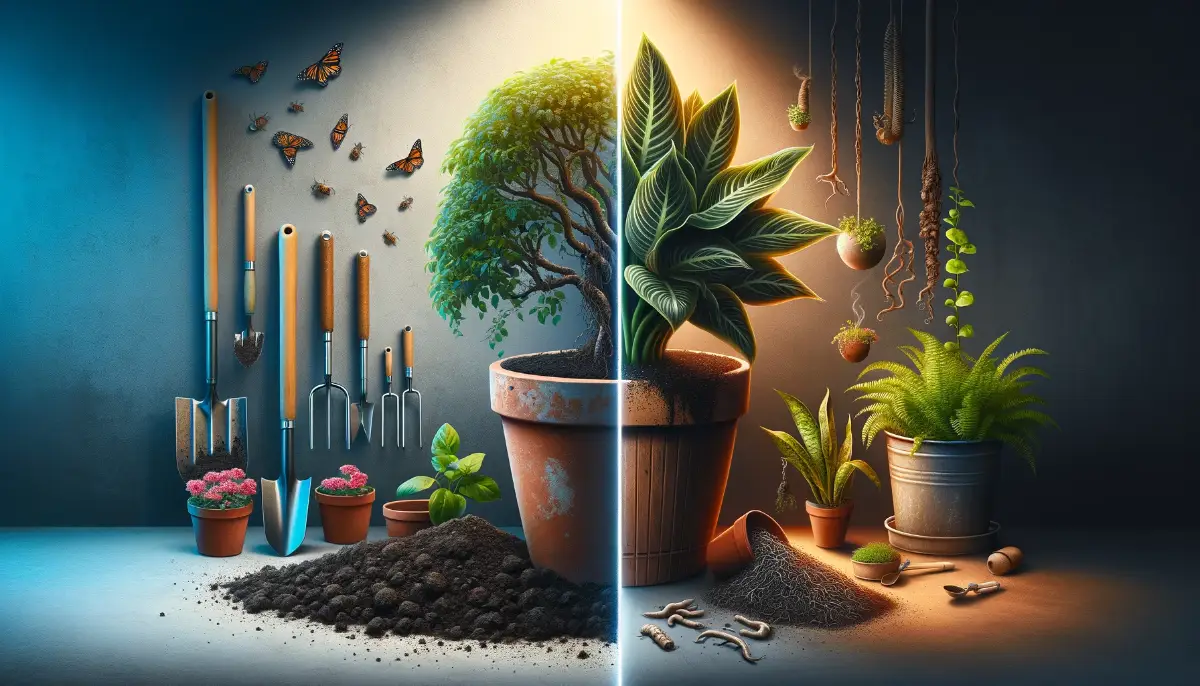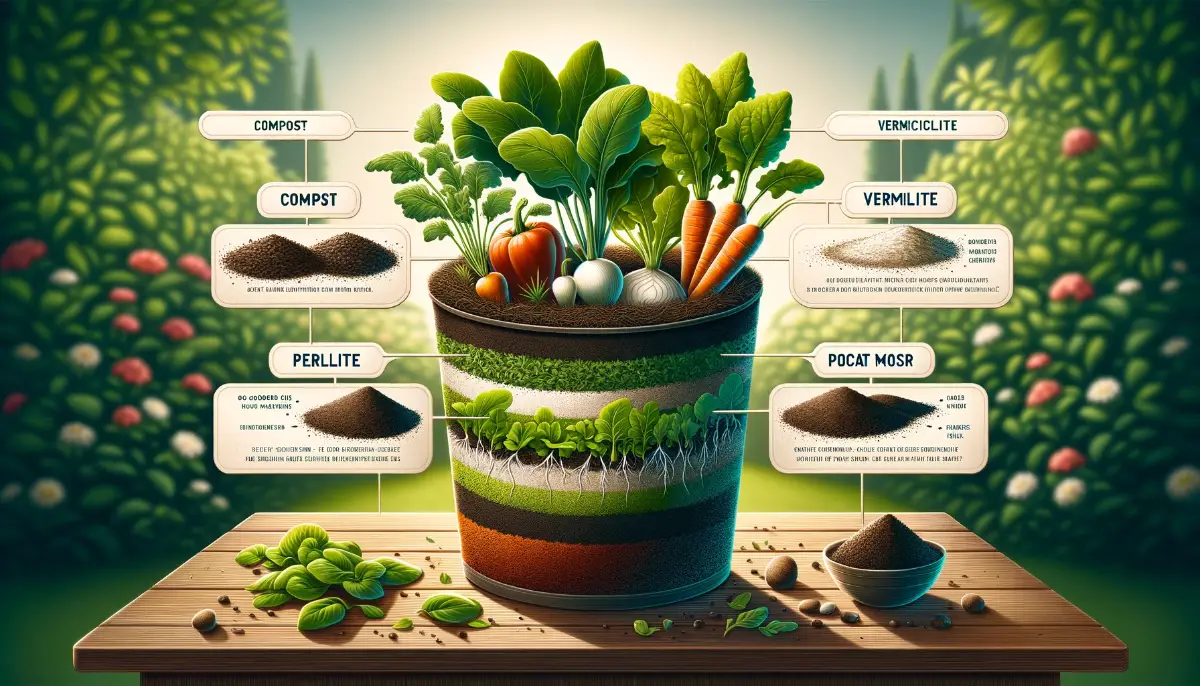In the realm of gardening, the foundation of a healthy garden lies beneath the surface, in the soil that cradles and nourishes plant life. Organic gardening emphasizes the importance of a natural, chemical-free approach, focusing on creating a thriving ecosystem that supports plant growth sustainably.
One of the cornerstones of this practice is the creation of organic soil, a blend designed to enrich the earth with nutrients, improve soil structure, and foster beneficial microbial activity. This article delves into the art and science of making your own organic soil, providing a step-by-step guide to building a fertile foundation for your garden.
The Essence of Organic Soil
Organic soil is more than just dirt; it’s a living, breathing entity teeming with microorganisms, insects, and organic matter that work in harmony to create a nurturing environment for plants. By crafting your own organic soil, you not only ensure your garden is free from synthetic chemicals and fertilizers but also contribute to a more sustainable and eco-friendly gardening practice.
Ingredients for Successful Organic Soil
Creating organic soil requires a blend of components, each serving a unique purpose in the soil’s ecosystem:
- Compost: The backbone of organic soil, providing a rich source of nutrients.
- Aged Manure: A nutrient booster, ensuring plants have the essentials for growth.
- Leaf Mold: A moisture manager, enhancing water retention and soil structure.
- Worm Castings: Nature’s fertilizer, improving nutrient content and soil health.
- Coconut Coir or Peat Moss: A hydration helper, aiding in moisture conservation.
- Perlite or Vermiculite: The aeration architects, ensuring the soil is loose and breathable.
- Rock Dust or Greensand: The mineral miners, supplying plants with vital micronutrients and trace elements.
How to Make Organic Soil at Home
The journey to creating your own organic soil is both a science and an art, requiring careful consideration of the balance between its components:
- Location & Preparation: Whether you’re mixing a large batch for a garden bed or a smaller quantity for container plants, choose a suitable space that can accommodate your soil-making endeavor.
- Mixing Your Ingredients: A balanced mix generally consists of 40% compost or aged manure, 30% aeration components, and 30% moisture retainers. This ratio can be adjusted to cater to the specific needs of your plants.
- Enriching with Minerals: Incorporating rock dust or greensand infuses the soil with essential minerals, promoting healthy plant development.
- pH Balancing: Tailoring the pH to suit your plants is crucial, with most preferring a range between 6.0 and 7.0. Lime can elevate the pH, while sulfur can lower it.
- Sterilization (Optional): For sensitive plants or seed starting, sterilizing the soil can prevent disease. This can be done through baking or solar sterilization techniques.
- Rest & Microbial Activation: Allowing your soil to rest for a few days before use encourages microbial activity, setting the stage for a vibrant garden.
The Benefits of DIY Organic Soil
Crafting your own organic soil is not just an act of gardening but a statement of sustainability and environmental stewardship. It reduces reliance on chemical fertilizers, recycles organic waste, and ensures that your garden is a haven of natural growth.
Moreover, it connects you more deeply with the cycle of life in your garden, providing a sense of accomplishment and a deeper understanding of the natural world.
Creating organic soil is a rewarding journey that enhances the health and productivity of your garden. By carefully selecting and blending natural ingredients, you can provide your plants with a nurturing environment that supports vibrant growth and sustainability. Embrace the art of making your own organic soil, and watch as your garden flourishes, grounded in the principles of organic gardening and ecological harmony.
FAQs on Making Your Own Organic Soil
What is organic soil?
Organic soil is a blend of natural materials such as compost, aged manure, and other organic matter, designed to provide a rich, nutrient-filled environment for plants. It supports healthy plant growth without the use of synthetic chemicals or fertilizers.
Why should I make my own organic soil?
Making your own organic soil allows you to control the quality and composition of the soil, ensuring it’s free from harmful chemicals. It’s also environmentally friendly, as it recycles kitchen scraps, yard waste, and other organic materials into valuable resources for your garden.
Can I use any type of compost in my organic soil mix?
Yes, but it’s best to use well-composted, mature compost to avoid introducing pathogens or weed seeds into your garden. Homemade compost from kitchen and yard waste is ideal, as long as it’s fully decomposed.
How do I adjust the pH of my organic soil?
You can adjust the pH of your soil by adding lime to increase the pH or sulfur to decrease it. The amount needed will depend on the current pH of your soil and the target pH for your plants. It’s recommended to test the soil’s pH before making adjustments.
Is it necessary to sterilize the organic soil?
Sterilization is not always necessary, especially for outdoor gardens. However, for seed starting or growing sensitive plants, sterilizing the soil can prevent disease outbreaks. Methods include baking the soil in an oven or using solar heat.
How often should I replace or replenish my organic soil?
Organic soil should be replenished with fresh compost and other amendments at least once a year to maintain its nutrient levels. However, the entire soil doesn’t need to be replaced; simply adding new organic matter can rejuvenate it.
Can I use organic soil for all types of plants?
Organic soil is versatile and can be tailored to suit a wide range of plants by adjusting its composition. However, some plants may require specific soil types or amendments, so it’s important to consider the particular needs of each plant.
What is the best way to store extra organic soil?
Store extra organic soil in a cool, dry place, ideally covered to protect it from the elements and to prevent it from drying out or becoming waterlogged. A covered bin or a tarp can work well for this purpose.
How do I know if my organic soil is healthy?
Healthy organic soil is dark, crumbly, and smells earthy. It should retain moisture well but also drain effectively. You can also observe the health of your plants; vibrant, strong plants are a good indicator of healthy soil.
Can adding too much compost harm my plants?
While compost is beneficial, too much of it can lead to nutrient imbalances or excessive moisture retention, which can harm plants. It’s important to balance compost with other soil amendments and materials to create a well-rounded soil mix.









